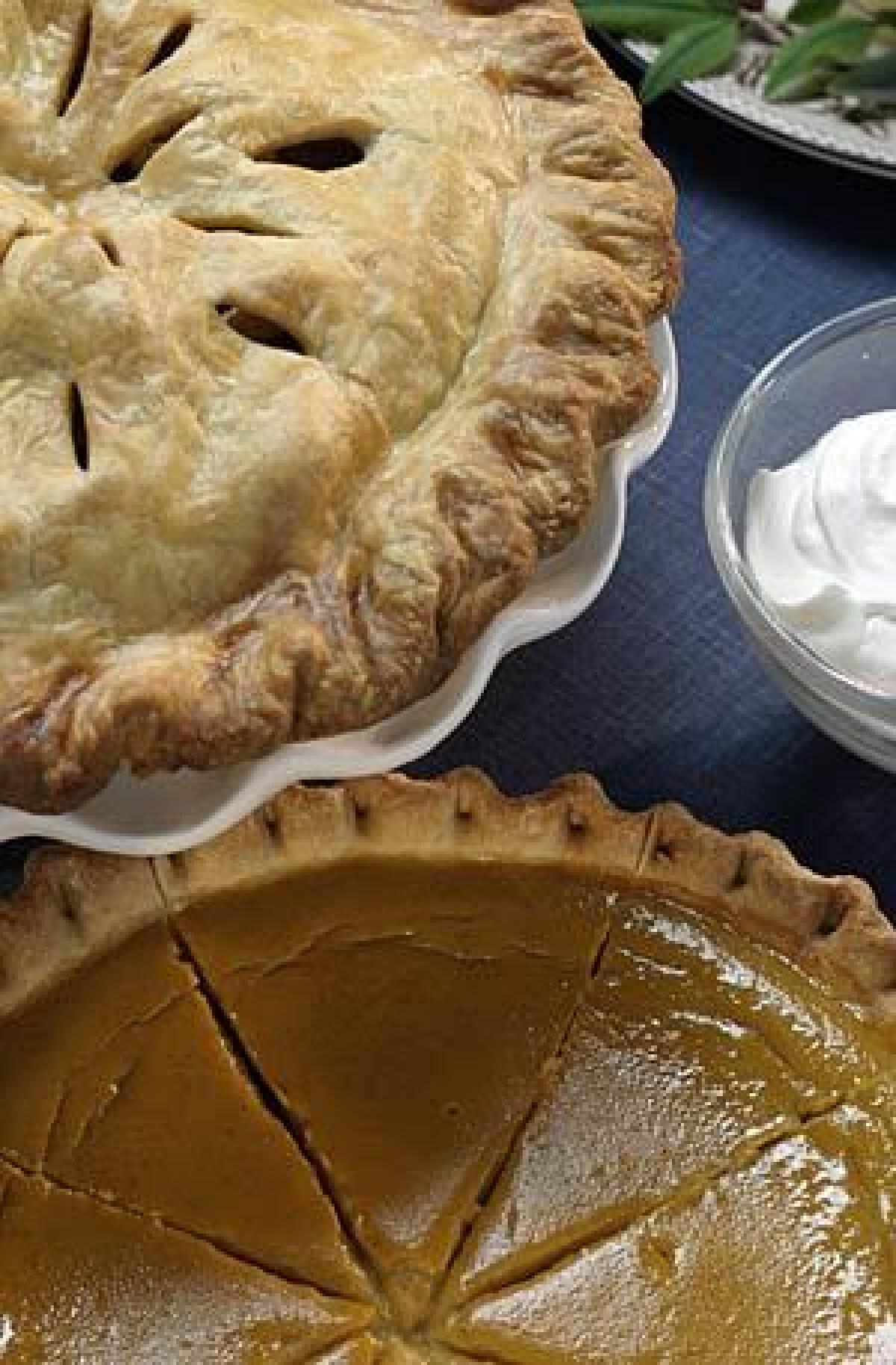It all starts with the dessert

Behold the pie, so perfect in its imperfection, the rustic pinnacle of the home cookâs art. Pie is personal, a little tricky, but surprisingly forgiving. Its flaws reveal soul. The crimped edge is a bit uneven, the crust perfectly flaky. The surface of the custard may be cracked, the vents on the double-crust unevenly spaced, but thatâs the kind of beautiful imperfection a pastry chef, especially with all those years of training, could never reproduce. The pie has personality.
It must be eaten at just the right moment. Bake it the day before, and its crust becomes gluey and sodden. If itâs out of the oven too close to dinner, it doesnât hold up enough to slice.
But make a couple of pies first thing in the morning and the flavors meld as they cool. There on the sill, they set the tone -- and unleash the aromas -- for Thanksgiving day.
You can flirt with huckleberry or chocolate cream, but on those occasions when you want to get back to the essence of the holiday, it has to be apple and pumpkin.
The pumpkin tradition goes back to the Pilgrims -- OK, so it wasnât pie; it was pumpkin baked in its own shell. The earliest recipe for pumpkin pie as we know it appeared in the first American cookbook, âAmerican Cookeryâ by Amelia Simmons, as âpompkinâ pudding in a crust.
You can get a head start the night before by making the pie dough and refrigerating it overnight. That gives you a sense of something accomplished, however small, and it gives the dough a chance to thoroughly chill and relax.
Pie dough is just flour, salt, butter and cold water, but with a few tricks you can easily transform them into the best crust youâve ever had.
Use good cold butter, straight from the fridge. Combine it with the flour and salt using the tools nature gave you: your hands. Using just your fingertips, rub the flour into the pieces of butter until itâs thoroughly blended. As you do this, youâre creating layers of butter within the flour, which in turn create a flaky crust. Donât use your entire hand; the warmth from your palms would cause the butter to melt.
When the mixture is crumbly and there is no more flour loose in the bowl, toss in the cold water and mix it in with a fork just till the mixture forms a ball. Lightly pat it into a round disk (or two for a double crust). Shaping it in a perfect circle now makes it easier to roll out. Wrap it in plastic film before refrigerating.
Why not use a pastry cutter or even a food processor? Using your hands gives you more control to gather the flour and butter together. With a pastry cutter, butter tends to clump in large pieces while the flour strays to the edges. And with a food processor, itâs too easy to overwork the dough, resulting in a tough crust.
On Thanksgiving morning, prepare the filling for both the apple and pumpkin pies before rolling out the crust. Take the dough out of the refrigerator about half an hour before youâre ready to roll it out. The same rule in making pie dough applies to rolling it: Handle it only as much as it needs.
To that end, sprinkle just enough flour on the rolling surface to avoid sticking and work in long, smooth strokes, moving the dough a quarter-turn now and then to keep it round. To transfer it to the pie plate, gently fold it in quarters and center it on the pie plate and unfold.
These pumpkin and apple pies are classic versions, wonderful as they are, but perfect, too, for riffing on. Add vanilla-scented quince to the apple for a rich and elegant variation, or add cranberries for sweet-tart pop. Pumpkin pie cries out now and then for the zing of fresh ginger, or you could dress it up with a crunchy hazelnut praline.
No wonder thereâs always room for dessert at Thanksgiving.


